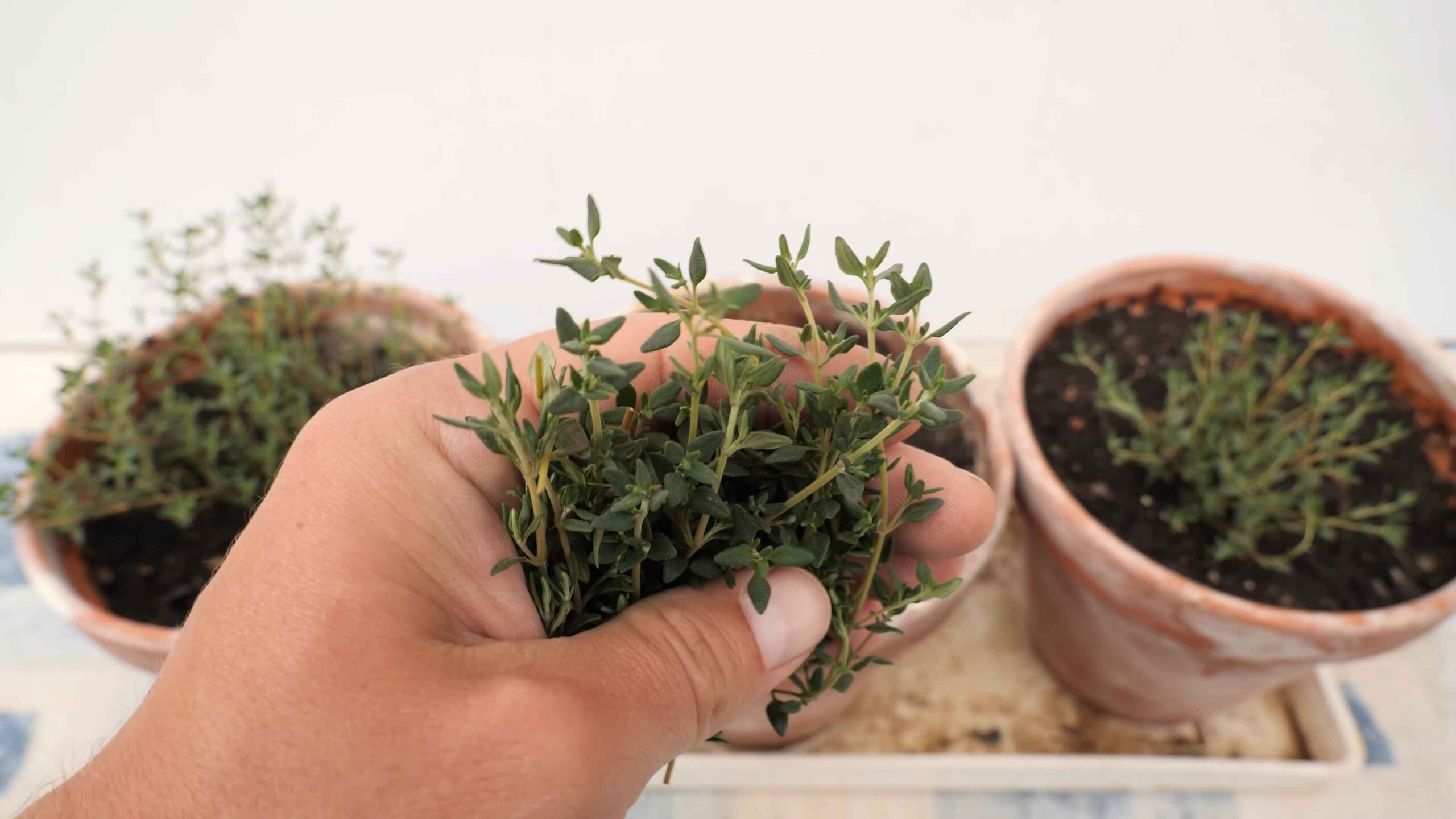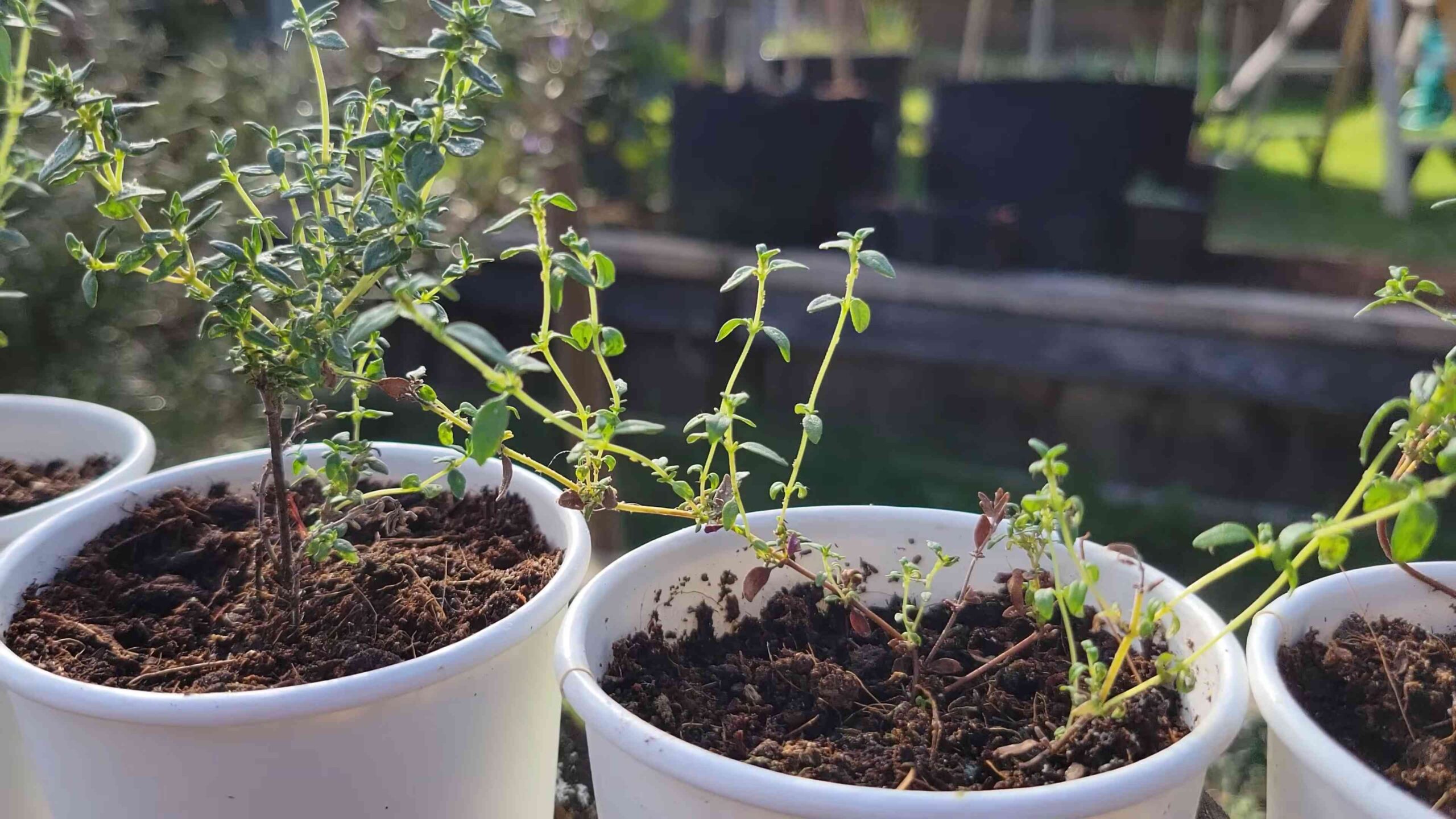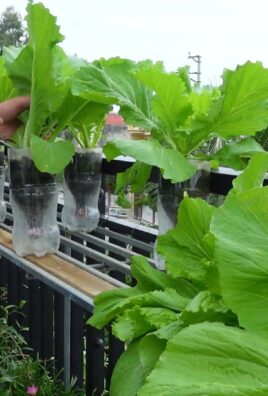Grow Thyme Indoors? Absolutely! Imagine stepping into your kitchen and snipping fresh, fragrant thyme to elevate your culinary creations. No more last-minute grocery store runs or settling for dried herbs that lack that vibrant, earthy punch. This isn’t just a dream; it’s an achievable reality with a few simple DIY tricks.
Thyme, with its rich history dating back to ancient Egypt and Greece, where it was used for medicinal purposes and even embalming, has always been cherished for its versatility. Today, its culinary and aromatic properties continue to make it a beloved herb worldwide. But let’s face it, not everyone has the space or climate for an outdoor herb garden. That’s where the magic of indoor gardening comes in!
I’m here to show you how easy and rewarding it can be to grow thyme indoors, regardless of your experience level. Whether you’re a seasoned gardener or a complete newbie, these DIY hacks will empower you to cultivate a thriving thyme plant right on your windowsill. We’ll cover everything from choosing the right pot and soil to providing optimal light and watering techniques. Get ready to enjoy the fresh, flavorful benefits of homegrown thyme all year round!

Growing Thyme Indoors: A Beginner’s Guide
Hey there, fellow plant enthusiasts! I’m so excited to share my experience with growing thyme indoors. It’s surprisingly easy, and having fresh thyme readily available for cooking is a total game-changer. Plus, the aroma is just divine! Let’s dive into how you can cultivate your own thriving thyme patch right in your kitchen.
Choosing the Right Thyme Variety
First things first, let’s talk thyme varieties. While most thyme will grow indoors, some are better suited than others. Here are a few of my favorites:
* English Thyme (Thymus vulgaris): This is the classic culinary thyme, known for its strong, earthy flavor. It’s a reliable grower and my personal go-to.
* Lemon Thyme (Thymus citriodorus): If you’re looking for a citrusy twist, lemon thyme is your answer. It has a delightful lemon scent and flavor that’s perfect for fish, chicken, and salads.
* Creeping Thyme (Thymus serpyllum): While often used as a ground cover outdoors, creeping thyme can also thrive indoors. It has a lower, spreading growth habit and a slightly milder flavor. It’s great for adding texture to your indoor herb garden.
Essential Supplies You’ll Need
Before we get started, gather these supplies. Trust me, having everything on hand will make the process much smoother.
* Thyme Seeds or a Thyme Plant: You can start from seeds or purchase a small thyme plant from a local nursery. I’ve done both, and both work well. Starting from seeds takes longer, but it’s more budget-friendly.
* Pot with Drainage Holes: Drainage is crucial for thyme. Choose a pot that’s at least 6 inches in diameter and has drainage holes at the bottom. Terracotta pots are excellent because they allow the soil to breathe.
* Well-Draining Potting Mix: Thyme hates soggy soil. Use a well-draining potting mix specifically formulated for herbs or vegetables. You can also amend regular potting mix with perlite or sand to improve drainage.
* Grow Lights (Optional but Recommended): While thyme loves sunlight, it can be challenging to provide enough natural light indoors, especially during the winter months. Grow lights will ensure your thyme gets the light it needs to thrive.
* Watering Can or Spray Bottle: For gentle watering.
* Small Shovel or Trowel: For planting.
* Fertilizer (Optional): A balanced liquid fertilizer can help boost growth, but it’s not essential.
Planting Your Thyme
Now for the fun part – planting! Whether you’re starting from seeds or a plant, the process is pretty straightforward.
Starting from Seeds:
1. Prepare the Pot: Fill your pot with well-draining potting mix, leaving about an inch of space at the top. Gently pat down the soil.
2. Sow the Seeds: Sprinkle the thyme seeds evenly over the surface of the soil. Thyme seeds are tiny, so don’t worry about spacing them perfectly.
3. Cover the Seeds: Lightly cover the seeds with a thin layer of potting mix. You can also use vermiculite, which helps retain moisture.
4. Water Gently: Use a spray bottle to mist the soil thoroughly. Be careful not to dislodge the seeds.
5. Create a Humid Environment: Cover the pot with plastic wrap or a clear plastic bag to create a humid environment. This will help the seeds germinate.
6. Place in a Warm Location: Place the pot in a warm location with indirect sunlight. A temperature of around 70-75°F (21-24°C) is ideal.
7. Monitor and Water: Check the soil moisture daily and mist as needed to keep it consistently moist but not soggy.
8. Remove the Cover: Once the seeds germinate (usually within 14-21 days), remove the plastic wrap or bag.
9. Provide Adequate Light: Move the seedlings to a location with bright, indirect sunlight or under grow lights.
10. Thin the Seedlings: Once the seedlings have a few sets of true leaves, thin them out, leaving the strongest plants spaced about 2-3 inches apart.
Planting a Thyme Plant:
1. Prepare the Pot: Fill your pot with well-draining potting mix, leaving about an inch of space at the top.
2. Remove the Thyme Plant from its Container: Gently squeeze the sides of the container to loosen the plant. Carefully remove the plant, being mindful not to damage the roots.
3. Loosen the Roots: Gently loosen the roots of the thyme plant with your fingers. This will encourage them to spread out and establish themselves in the new pot.
4. Plant the Thyme: Place the thyme plant in the center of the pot, making sure the top of the root ball is level with the soil surface.
5. Fill with Soil: Fill in the remaining space around the plant with potting mix, gently patting it down.
6. Water Thoroughly: Water the thyme plant thoroughly until water drains out of the bottom of the pot.
Caring for Your Indoor Thyme
Now that your thyme is planted, it’s time to learn how to care for it. Here’s what you need to know:
* Light: Thyme needs at least 6-8 hours of sunlight per day. If you don’t have a sunny window, use grow lights. I use LED grow lights and find they work wonders.
* Watering: Water thyme when the top inch of soil feels dry to the touch. Avoid overwatering, as this can lead to root rot. Thyme prefers to be on the drier side.
* Temperature: Thyme prefers temperatures between 60-70°F (15-21°C).
* Humidity: Thyme doesn’t need high humidity. In fact, too much humidity can be detrimental.
* Fertilizing: Fertilize thyme sparingly, if at all. A light feeding with a balanced liquid fertilizer every few months is sufficient. Over-fertilizing can lead to leggy growth and a less intense flavor.
* Pruning: Prune your thyme regularly to encourage bushier growth. Pinch off the tips of the stems to promote branching. You can also harvest sprigs of thyme as needed for cooking.
* Repotting: Repot your thyme plant every year or two as it outgrows its pot. Choose a pot that’s slightly larger than the previous one.
Harvesting Your Thyme
One of the best parts of growing your own thyme is being able to harvest it whenever you need it.
* When to Harvest: You can start harvesting thyme once the plant is established and has grown to a reasonable size.
* How to Harvest: Use sharp scissors or pruning shears to snip off sprigs of thyme. Avoid cutting more than one-third of the plant at a time.
* Drying Thyme: If you want to dry your thyme for later use, tie the sprigs together and hang them upside down in a cool, dry place. Once the leaves are dry and brittle, you can crumble them and store them in an airtight container.
Troubleshooting Common Problems
Even with the best care, you might encounter some problems with your indoor thyme. Here are a few common issues and how to address them:
* Yellowing Leaves: This can be a sign of overwatering, underwatering, or nutrient deficiency. Check the soil moisture and adjust your watering accordingly. If the problem persists, try fertilizing with a balanced liquid fertilizer.
* Leggy Growth: This is often caused by insufficient light. Move your thyme to a sunnier location or use grow lights. Pruning can also help encourage bushier growth.
* Root Rot: This is caused by overwatering and poor drainage. Make sure your pot has drainage holes and that you’re not overwatering. If you suspect root rot, repot your thyme in fresh, well-draining potting mix.
* Pests: Thyme is generally pest-resistant, but it can occasionally be affected by aphids or spider mites. If you notice pests, try spraying your thyme with insecticidal soap.
Tips for Success
Here are a few extra tips to help you succeed with growing thyme indoors:
* Choose the Right Location: Place your thyme in a location that gets plenty of sunlight or under grow lights.
* Use Well-Draining Potting Mix: Thyme hates soggy soil, so use a well-draining potting mix.
* Water Sparingly: Avoid overwatering. Let the top inch of soil dry out before watering again.
* Prune Regularly: Prune your thyme regularly to encourage bushier growth.
*

Conclusion
So, there you have it! Growing thyme indoors is not only achievable, but it’s also incredibly rewarding. Imagine having fresh, fragrant thyme readily available at your fingertips, no matter the season. Forget those sad, dried-out jars from the supermarket – with a little effort, you can cultivate your own thriving thyme plant right in your kitchen.
This DIY trick is a must-try for several reasons. First, it’s cost-effective. Instead of constantly buying thyme, you’ll have a sustainable source that keeps on giving. Second, it’s incredibly convenient. No more last-minute trips to the store when you realize you’re out of this essential herb. Third, and perhaps most importantly, it’s incredibly satisfying. There’s something truly special about nurturing a plant from a tiny seedling or cutting to a flourishing herb that enhances your culinary creations.
But don’t stop there! Experiment with different varieties of thyme. Lemon thyme adds a bright, citrusy note to your dishes, while creeping thyme can be used as a fragrant ground cover in miniature indoor gardens. You can also try propagating thyme from cuttings taken from existing plants, expanding your thyme collection without spending any extra money. Consider using different types of containers, from terracotta pots to repurposed jars, to add a touch of personality to your indoor herb garden. And for those with limited space, vertical planters are a fantastic option for maximizing your thyme-growing potential.
We’ve provided you with all the essential information to successfully grow thyme indoors. Now it’s your turn to put these tips into practice. Don’t be afraid to experiment, learn from your mistakes, and most importantly, have fun! We are confident that you will be enjoying your own homegrown thyme in no time.
We encourage you to embark on this green adventure and discover the joy of having fresh thyme at your fingertips. Once you’ve experienced the difference that fresh, homegrown thyme makes, you’ll never go back to store-bought again.
So, grab your pots, soil, and thyme seeds or cuttings, and get started today! We’re eager to hear about your experiences. Share your photos, tips, and questions in the comments below. Let’s create a community of indoor thyme growers and inspire each other to cultivate thriving herb gardens. Happy growing!
Frequently Asked Questions (FAQ)
What is the best type of thyme to grow indoors?
The best types of thyme to grow indoors are those that are relatively compact and well-suited to container gardening. Common thyme (Thymus vulgaris) is a popular choice due to its versatility and robust flavor. Lemon thyme (Thymus citriodorus) is another excellent option, offering a delightful citrusy aroma and flavor. Creeping thyme (Thymus serpyllum) can also be grown indoors, although it may require more space as it tends to spread. Ultimately, the best type of thyme for you will depend on your personal preferences and the space you have available. Experiment with different varieties to discover your favorites!
How much sunlight does indoor thyme need?
Thyme thrives in bright sunlight, so providing adequate light is crucial for its indoor growth. Aim for at least six to eight hours of direct sunlight per day. A south-facing window is ideal, but if you don’t have one, a west-facing window can also work. If your thyme isn’t getting enough natural light, consider supplementing with a grow light. Position the grow light a few inches above the plant and keep it on for 12-14 hours per day. Insufficient light can lead to leggy growth and a weaker flavor.
What type of soil is best for growing thyme indoors?
Thyme prefers well-draining soil that is slightly alkaline. A good potting mix for thyme should consist of equal parts potting soil, perlite, and sand. This combination provides the necessary drainage and aeration that thyme needs to thrive. Avoid using heavy, clay-based soils, as they can retain too much moisture and lead to root rot. You can also add a small amount of lime to the soil to increase its alkalinity.
How often should I water my indoor thyme plant?
Overwatering is a common mistake when growing thyme indoors. Thyme prefers to dry out slightly between waterings. Water your thyme plant only when the top inch of soil feels dry to the touch. When you do water, water thoroughly until water drains out of the bottom of the pot. Be sure to empty the saucer beneath the pot to prevent the plant from sitting in water. During the winter months, when growth slows down, you may need to water even less frequently.
How do I fertilize my indoor thyme plant?
Thyme is not a heavy feeder, so it doesn’t require frequent fertilization. Fertilize your thyme plant sparingly, about once a month during the growing season (spring and summer). Use a balanced liquid fertilizer diluted to half strength. Avoid over-fertilizing, as this can lead to leggy growth and a less intense flavor. Alternatively, you can amend the soil with compost or worm castings at the beginning of the growing season to provide a slow-release source of nutrients.
How do I prune my indoor thyme plant?
Pruning is essential for maintaining a healthy and productive thyme plant. Regular pruning encourages bushier growth and prevents the plant from becoming leggy. Prune your thyme plant regularly throughout the growing season, removing about one-third of the growth at a time. You can also pinch off the tips of the stems to encourage branching. Avoid pruning too heavily, as this can stress the plant.
How do I harvest thyme from my indoor plant?
You can begin harvesting thyme from your indoor plant once it has reached a height of about 6 inches. To harvest, simply snip off the stems with scissors or pruning shears. Harvest thyme in the morning, after the dew has dried, for the best flavor. You can use fresh thyme immediately or dry it for later use. To dry thyme, hang the stems upside down in a cool, dry place until they are completely dry.
What are some common problems when growing thyme indoors?
Some common problems when growing thyme indoors include overwatering, underwatering, insufficient light, and pests. Overwatering can lead to root rot, while underwatering can cause the plant to wilt and dry out. Insufficient light can result in leggy growth and a weaker flavor. Pests such as aphids and spider mites can also infest thyme plants. Inspect your thyme plant regularly for signs of pests and take appropriate action if necessary.
Can I propagate thyme from cuttings indoors?
Yes, propagating thyme from cuttings is a relatively easy and effective way to expand your thyme collection. Take cuttings from healthy, non-flowering stems, about 4-6 inches long. Remove the lower leaves and dip the cut end in rooting hormone. Plant the cuttings in a well-draining potting mix and keep them moist. Place the cuttings in a warm, bright location, but out of direct sunlight. Roots should develop within a few weeks.
How do I overwinter my indoor thyme plant?
Thyme is a perennial herb, meaning it can live for several years. To overwinter your indoor thyme plant, reduce watering and fertilization during the dormant season (fall and winter). Provide the plant with as much light as possible and keep it in a cool location. You can also prune the plant back to encourage new growth in the spring. With proper care, your thyme plant will thrive for many years to come.





Leave a Comment